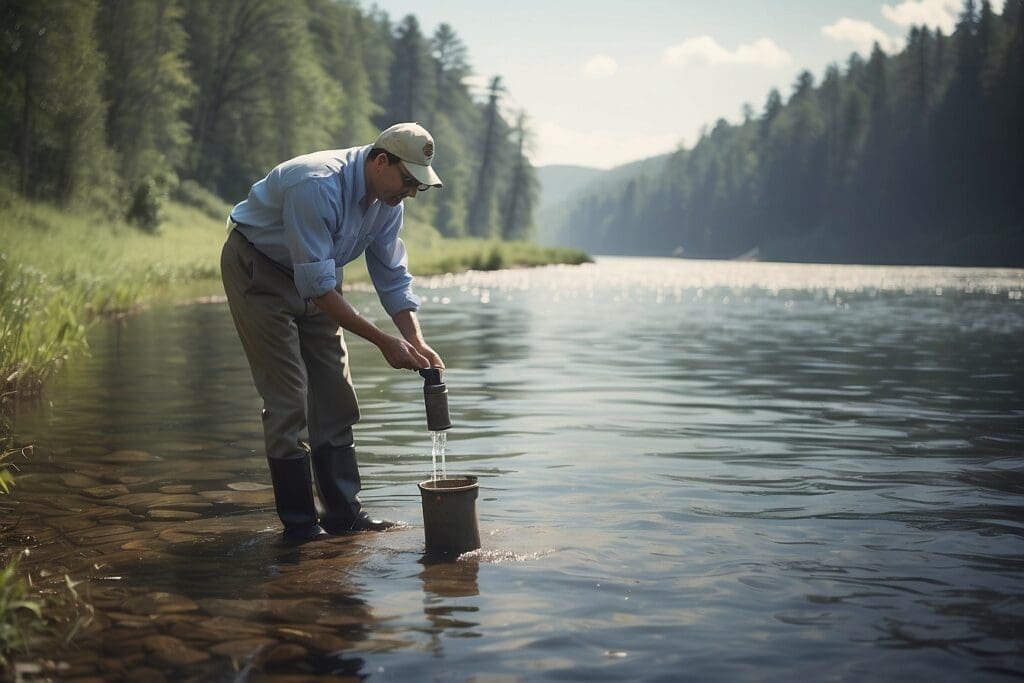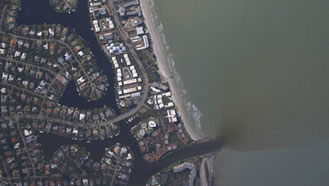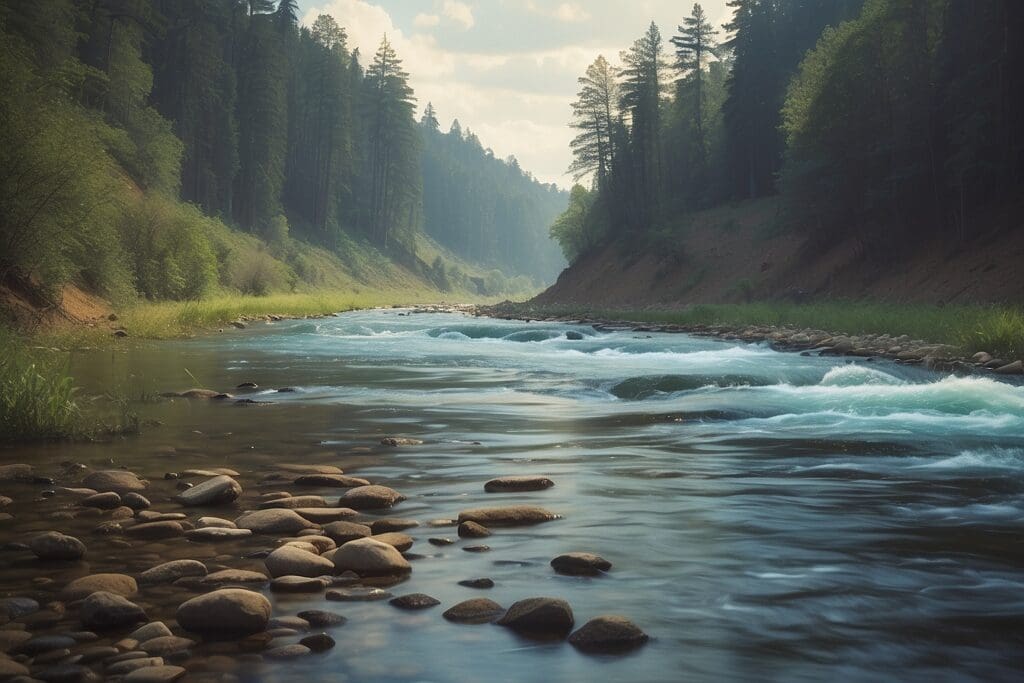Forty years ago, on October 18, 1972, a bipartisan United States Congress amended the Federal Water Pollution Control Act of 1948.1 The amended act became popularly known as the Clean Water Act (CWA). The CWA also implemented the National Pollutant Discharge Elimination System (NPDES), which requires industry to obtain permits before they discharge waste.2 Unmonitored dumping by industry was effectively outlawed. Now, in 2013, we can reflect on the Clean Water Act, including the positive changes it has brought about, and how to build on that progress.
The Impetus for Change

Shockingly, only about one third of the waters in the U.S. were safe for swimming or fishing before the Clean Water Act was enacted. The other two thirds of U.S. waters were severely polluted by sewage, oil, pesticides, and heavy metals.3 Here is a small survey of the horrific state our country’s waters were in prior to the CWA:
- Through the 1950s to the 1970s the country was losing up to 500,000 acres of wetlands per year.4
- In 1968, the U.S. Bureau of Sport Fisheries took 590 water samples and found the presence of DDT in 584, thus almost 99% of the water samples contained DDT! Moreover, in some cases the levels of DDT were over nine times the FDA limit.5
- In 1969, the Cuyahoga River caught fire near Cleveland. The Cuyahoga had burned repeatedly since the 1930s due to chemical pollution and a picture of the river made the cover of Time Magazine in 1969.6 This same year, discharges from four food processing plants killed 26 million fish in one Florida lake. The nationwide fish-kill reached a record 41 million fish in 1969.7
- In 1971 87% of swordfish samples from U.S. waters were tested by the FDA and found to contain so much mercury that they were declared unfit for human consumption.8
The Clean Water Act is Born
Frustrated with the water quality in their country, U.S. citizens demanded action. In 1972, Congress responded and passed the Federal Water Pollution Control Act. There was just one hiccup—Richard Nixon. Nixon actually vetoed the legislation, stating that although he supported cleaning up polluted rivers, lakes, and bays, the Act’s cost of $24 billion was “staggering, budget-wrecking… I have nailed my colors to the mast on this issue. The political winds can blow where they may. I am prepared for the possibility that my action on this bill may be overridden.”11
Nice foresight, President Nixon! Senator Edmund Muskie of Maine responded most eloquently: “Can we afford clean water? Can we afford rivers and lakes and streams and oceans which continue to make life possible on this planet? Can we afford life itself? … These questions answer themselves.”13 Congress overrode Nixon’s veto and passed the Act with the explicit goal to “restore and maintain the chemical, physical, and biological integrity of our nation’s waters.”14 The law called for “zero discharge of pollutants into navigable waters by 1985, and fishable and swimmable waters by 1983.”15
Success!
Although the ambitious goals called out in the 1972 Act were not met, the Clean Water Act is still one of the most successful environmental laws in U.S. history. Largely due to the Act, an estimated 65% of waterways in the U.S. are now fishable and swimmable. Average wetland losses have gone down from 500,000 acres to 60,000 acres per year. Best of all, 90.7 % of U.S. community water systems now meet “all applicable health-based standards.”16
That said, there is still work to be done. Although the Clean Water Act has been successful at reducing pollution from major sources like factories, it has been harder to reduce pollutants from nonpoint sources like runoff from cities and farms. The CWA was amended in 1987 to try to address this problem, but it’s no surprise that it’s harder to regulate pollutants from diffuse sources.17
According to Ken Greenberg, chief of the Environmental Protection Agency (EPA) Clean Water Act compliance office for Region 9, there are certain provisions in the CWA that try to address nonpoint pollution, “the EPA does require general permits for certain sources of runoff. Construction sites may need erosion fences, for instance, while industrial plants and cities may need infrastructure to trap stormwater.”18 The EPA also has other tactics, like funding watershed restoration projects that replace impervious surfaces like paved parking lots with more permeable surfaces such as parks, ponds, and here ), which cut down the on the amount of stormwater that makes its way into rivers and ponds.19

Stormwater Runoff20
Looking to the Future
As Robert Adler, an environmental lawyer at the University of Utah, put it: “While we’ve made a lot of progress in reducing the discharge of chemicals, there are also a lot we weren’t aware of in 1972…You can’t discharge any pollutant without a permit if it’s regulated, but the bulk of our regulations are focused on a suite of chemicals that was compiled in the 1970s.” There are several ways in which environmentalists want to improve the CWA, including:
- Adding pharmaceuticals and hormone-disrupting chemicals like parabens and BPA: “there are whole categories of pollutants that have been little-studied and little-regulated,” says Jonathan Scott of Clean Water Action. “A lot of these substances end up in the water, and the law was not set up to regulate them.”21
- Fight off recent Congressional bills, amendments, and budget riders to gut the Clean Water Act and “jeopardize the environmental health of our waterways and the lifeblood of our communities across the country, all without public debate,” says Robert F. Kennedy, Jr.22
- Requiring closed-cycle cooling for power plants. Power plants in the U.S. consume more than 70 trillion gallons of water a day, killing billions of fish in the process, and hot water is released back into the river, further deteriorating our fragile ecosystems. Closed cycle cooling—a technology already in use—would reduce water withdrawals and fish kills by about 95%.23
- Requiring a rule to regulate coal ash waste.24
- Getting Congress to pass the “End Polluter Welfare Act” (H.R. 5745), a bill that ends the more than $110 billion in taxpayer subsidi es to the fossil fuel industry, an industry that is the biggest water-polluter on earth.26
- Finally, Jon Devine of the Natural Resources Defense Council wants the Obama Administration to apply existing Clean Water Act regulations to more wetlands. Two court rulings, known as the Rapanos and Carabell cases, had the net effect of removing Clean Water Act protections from isolated wetlands and from streams that flow only part of the year. Devine says that it was not so much the court’s ruling, as the George W. Bush Administration’s interpretation that left these wetlands and streams unprotected.27
Time will tell what happens to the Clean Water Act. Here’s to hoping that it lives to a ripe old age and continues to grow and prosper to protect our waters and our health.





